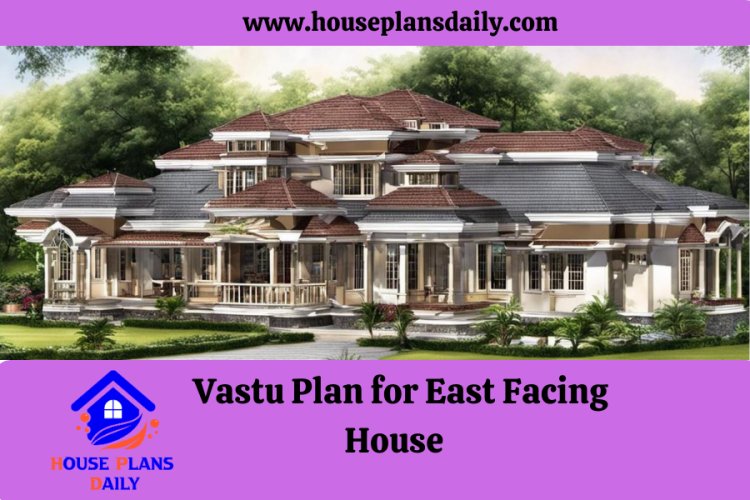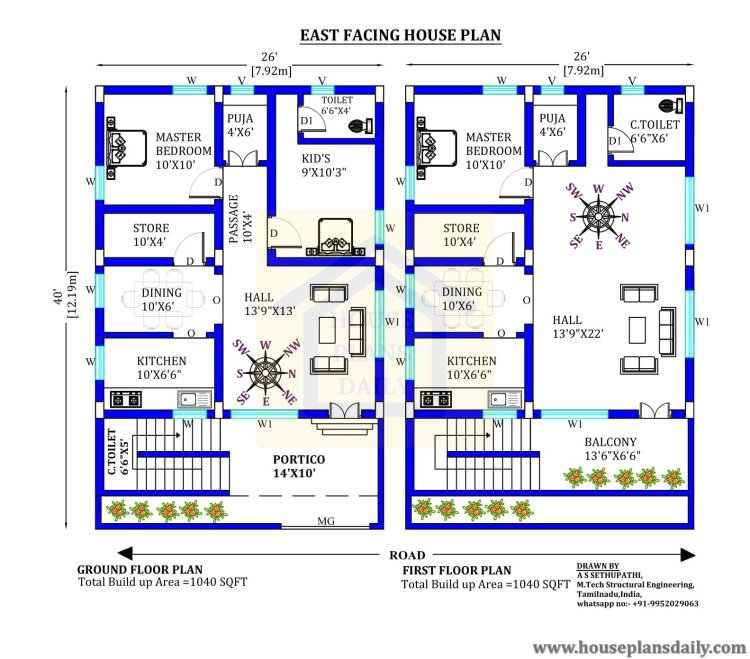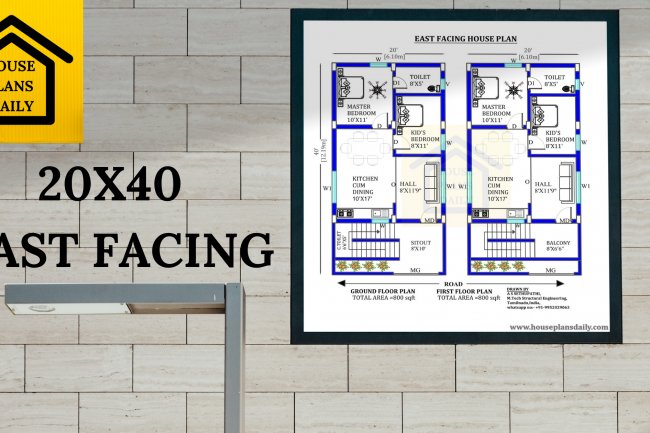Vastu Plan for East Facing House | East Face Plan
The ancient knowledge of constructing spaces, known as Vastu Shastra, is rooted in the belief that the laws of nature significantly contribute to the well-being and prosperity of its inhabitants.
Vastu Plan for East Facing House | East Face Plan
The ancient knowledge of constructing spaces, known as Vastu Shastra, is rooted in the belief that the laws of nature significantly contribute to the well-being and prosperity of its inhabitants. One crucial aspect of this time-honored practice revolves around the preferred direction of entrance to the house, and the east is considered particularly auspicious. This essay endeavors to illuminate the principles of Vastu Shastra with specific focus on east-facing houses, their practical applications in house plans, and the resultant positive energy flow it ensures. Real-life instances of successfully implemented east-facing Vastu house designs serve as enlightening case studies, providing an in-depth understanding of how these ancient rules can be utilized in contemporary architecture.

Vastu Plan for East Facing House
Understanding Vastu Shastra Principles
Embracing The Art of Vastu Shastra: Key Principles for an East Facing House
As enthusiasts of Vastu Shastra, the ancient Indian science of architecture, it's fascinating to delve into the intrinsic techniques and principles this holistic wisdom endorses while planning a living space. Seen as a pathway to serenity and prosperity, an east-facing house is particularly alluring to Vastu practitioners and novices alike. Here we'll explore some key factors inherent to this exceptional direction-oriented dwelling style.
1. Entrance Placement: Greet Prosperity With Open Arms
Every zone in a house is associated with a distinct element or deity, influencing all aspects of life – career, relationships, health, prosperity and more. In terms of east-facing houses, the entrance door’s prime location is the fifth and sixth padas (steps or zones). It's believed to invite positive energies in and nurtures prosperity and success. Making sure the entrance is clean, well-lit, and vibrant augments this cosmic influence.
2. Planning the Interior Layout: Balance and Harmony
Following an east-facing home's main entrance placement, it's crucial to plan the rest of the interior layout appropriately. The northeastern corners should ideally be allocated for puja rooms or meditation space, offering a serene environment for spiritual activities. Bedrooms are best situated in the south, southwest, or west zones, while the kitchen thrives in the southeast. Meanwhile, the north zone proves ideal for monetary growth, making it perfect for a treasury or a home office.
3. Light and Air Circulation: The Lifeline of a house.
Smooth air circulation and ample natural light are pillars of healthy and vibrant living as per Vastu Shastra. East facing houses should have maximum windows and ventilation on the north and east side to allow morning sunlight, while the west and south windows should be smaller to limit harsh afternoon sunlight. This arrangement allows a balance of the energies and maintains the sanctity and equilibrium inside the house.
4. Water Sources Placement: Harness the Element
In Vastu, the placement of water sources plays a pivotal role in amplifying positive vibrations. For east-facing homes, bore wells or water tanks should ideally be situated in the northeast zone. It's believed to promote prosperity. However, the southeast must be avoided for any water-related constructions.
5. Earth and Space Elements: Command your Yard!
The balance of the earth elements is vital for maintaining harmony in an east-facing house. An open yard or garden should ideally be in the east or north zone, supporting relaxation and rejuvenation. Outbuildings such as garages or tool sheds are best kept in the northwest or southeast to prevent blocking beneficial sunlight.
Indeed, the principles of Vastu Shastra offer a profound understanding of the spatial, elemental, and directional energies, and their harmonious integration in our living spaces. So, whether you're planning your new east-facing home or remodeling an existing one, understanding and implementing these key principles of Vastu Shastra can not only nurture a peaceful and prosperous environment but delightfully deepen your engagement with this ancient science of architecture.

Vastu Ideas
Applying Vastu Principles to East-facing House Plan
Discovering Harmony: Applying Vastu Principles to an East-Facing House Plan
Stepping into the fascinating world of Vastu Shastra can truly be an intriguing journey! Embracing the delicate balance between architectural design and the natural elements, it has the potential to bring positivity, prosperity, and peace to your home. But, when you're dealing with an east-facing house plan, how can you incorporate these age-old principles? Let's delve into this captivating conversation!
Starting off, we have the cornerstone of any Vastu-oriented planning - direction. Considered auspicious, east-facing houses are said to bring good fortune. But remember, it's just the beginning! To truly unlock the potential of Vastu, you must pay attention to the specific placement of household features. An oft-overlooked example is the placement of the master bedroom. It's recommended to consider the south-eastern corner for this.

vastu house plans
Next up on our list is the position of the kitchen. Another vital part of your house, the kitchen's location can greatly influence the Vastu of your dwelling. Placing your kitchen in the south-east corner is regarded as auspicious, according to Vastu principles. It's believed to reduce the chances of health problems and financial problems.
Additionally, the placement of your staircase is a deciding factor in the Vastu-compliance of your house. The staircase should ideally be placed in the south, west, or south-western parts of your house. Ensure that it doesn't intersect with your house's central axis to avoid disrupting positive energies.
Now let's shine some limelight on one of the oft-neglected areas - your house's bathroom and toilet. Ensuring these areas are Vastu-compliant can contribute to maintaining the harmony of your residence. A west or north-western direction is typically favored for bathrooms.
Expanding on the element of fire, the orientation and placement of electrical appliances are pivotal. To effectively channelize this energy, place electrical appliances in the south-eastern part of your house. This minimizes the chances of accidents and helps maintain the tranquillity of your abode.
The spiritually significant prayer or meditation room, according to Vastu, is most beneficial in the north-eastern part of the house. This serene corner invites a sense of calm compliance and helps reinforce your connection with the Divine.
Last but definitely not least, let's consider the parking area or garage, which, as per traditional Vastu principles, should ideally be located in the north-western part of the residence. This not only invites prosperity but also aids in creating a smooth path for comings and goings.
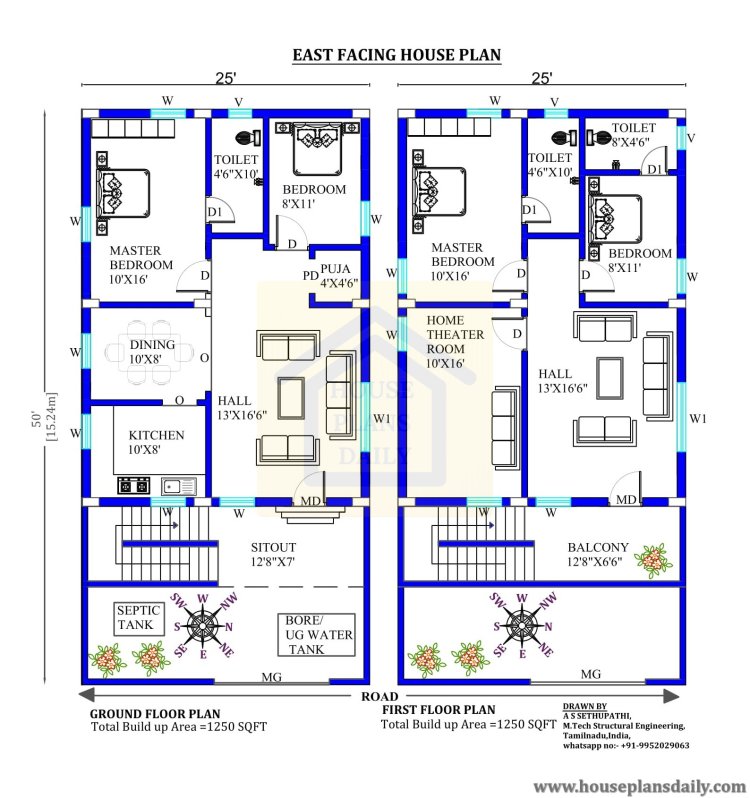
vastu for home
Applying Vastu principles to an east-facing house plan can seem like a challenging task, but with a passionate pursuit and thoughtful execution, it can infuse a sense of harmony, good health, wealth, and overall positivity. Just remember to steadily ground every step in the established guidelines of these ancient principles for a genuinely Vastu-compliant home.
So go ahead, realign your living spaces and let the good vibes flow through your east-facing house. Harmonize, Energize, Realize – that’s the Vastu way!

home design as per vastu
Case Study: Successful East-facing Vastu House Plans
Embracing the principles of Vastu Shastra for an east-facing house goes far beyond the initial layout planning and entrance placement. As we dive deeper into the subject, let's review some practical, successful examples of east-facing Vastu house plans.
Let's head straight to the heart of the home - the kitchen. Ideally, in an east-facing house, it should be placed in the southeast or northwest quadrant. According to Vastu principles, the southeast symbolizes the fire element, making it most suitable. If you choose the northwest quadrant, ensure the stove is placed in the southeast corner of the room to maintain balance.
Transitioning into the personal space, the master bedroom in an east-facing house is best located in the south, southwest, or west sections of the house. It's believed that these directions strengthen social relationships, career development, and overall stability.
Moving on to staircases, these should descend towards the north or east. If a staircase is centrally placed within the house, ensure it doesn't directly face the entrance. Applying these principles is believed to redirect negative energy outwards, promoting internal harmony.
In terms of bathrooms and toilets, favor the northwest or west sections of the house. Avoid the northeast and southwest corners to maintain positive energy circulation. This placement is said to avoid fostering detrimental health and financial impacts.

Vastu for east home
Consider the placement of electrical appliances next. Since these emit electromagnetic energy, they should ideally be situated in the southeast section of the house. This enhances productivity and harmony in the living space.
Moving to the spiritual aspect, the prayer or meditation room should preferably be located in the northeast sector of the house. This quadrant, called "Ishan", is considered sacred and beneficial for spiritual growth and mental peace.
Parking areas and garages in an east-facing Vastu house should ideally be located in the northwest. If this isn't feasible, the southeast could be a secondary option, but the northwest is preferred to attract positive energy and opportunities.
Incorporating these stalwart Vastu principles in your east-facing house design not only creates a more harmonious living environment but may also impart unseen benefits on the health, prosperity, and overall well-being of the inhabitants. By creating this energetic balance, these principles add immense value to your abode, making it more than just a house - it essentially becomes a nucleus of positive energy. Remember though, the road to mastering Vastu is a journey, so keep learning and experimenting!

house plans as per vastu shastra
The ultimate aspiration of implementing principles of Vastu Shastra, especially in the context of designing east-facing houses, is to harmonize our living spaces with the forces of nature. From identifying the perfect room designation, entrances layout, to choosing the appropriate colors, each detail matters. Despite the antiquity of these principles, their relevance today is unquestionable as evidenced by various successful implementation of east-facing Vastu house plans. This essay offers valuable insights that can guide homeowners, architects, and designers in integrating the principles of Vastu Shastra into modern day architecture, to create not just aesthetically pleasing, but also energetically harmonious homes.
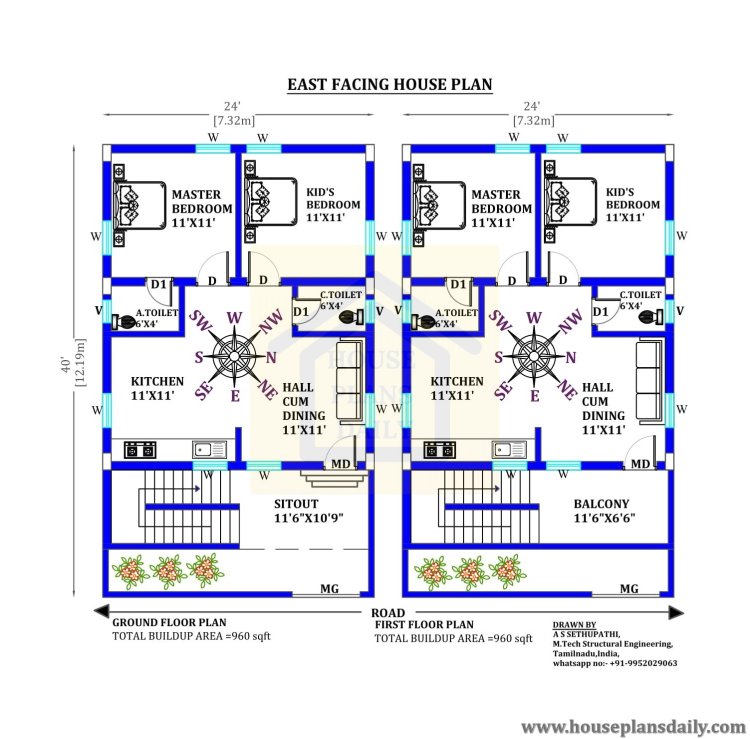
east facing house as per vastu

north facing house vastu plan with pooja room

vaastu homes

best vastu for home

entrance of house as per vastu

